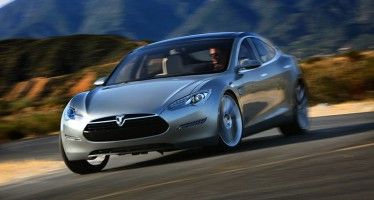‘Cool roads’ AB 296 threatens Southern California’s groundwater
By Wayne Lusvardi
More scientific evidence is mounting against California Assembly Bill 296, which would fund pilot projects to eventually mandate Cal-Trans paint roads a lighter color to reduce the so-called “urban heat island effect.”
A new study indicates “cool roads,” combined with the inevitably mandated “cool roofs” of buildings, would severely reduce groundwater supplies in urban areas on a cumulative basis.
The “urban heat island effect” is defined as a “higher-temperature ‘dome’ of heat created over an urban or industrial area by hot layers forming at building top or chimney level.” The “heat island effect” disappears by midday when temperatures rise so it technically should be called the “nighttime urban heat island effect.”
“Cool Roads” a “Health Disaster in the Making”
Last week, Dr. Mark Jacobson, a climatologist at the Stanford Engineering School, said painting road surfaces a lighter color would be “a public health disaster waiting to happen.” He explained that making the air cooler near the ground surface will worsen the dreaded inversion layer that traps pollution. An inversion layer is created when a layer of hot air traps colder air below in an urban basin typically rimmed by mountains and the ocean. All that painting roads white, grey or light green would apparently do is bring back the smog levels that Los Angeles experienced in the 1960s.
“Cool Roads” Would Reduce Urban Groundwater Supplies
Now, a new study from Arizona State University indicates that repainting roofs and roads lighter colors would likely lead to about a 25 percent reduction in urban rainfall over a five year cycle — or 5 percent per year.
The research is summarized in the Sept. 7 issue of Environmental Research Letters. The researchers included Alex Mahalov, the Wilhoit Foundation Dean’s Distinguished Professor or Mathematical and Statistical Sciences. The research was conducted on what is called Arizona’s “Sun Corridor,” composed of four growing metropolitan areas: Phoenix, Tucson, Prescott and Nogales.
The researchers estimated that the expansion of urban development would reduce rainfall by 12 percent and that “cool roofs” would reduce rainfall another 4 percent per year.
The study concluded: “[T]ruly sustainable development will have to consider impacts extending beyond average temperature” to include impacts on rainfall and groundwater hydrology. In other words, painting building roofs lighter colors would involve a tradeoff of slightly cooler average air temperature for less urban rainfall.
The amount of additional rainfall reduction from “cool road” surfaces was not specifically estimated by the Arizona State University study. But a guesstimate can be made.
Road surfaces are estimated to cover from 14 percent of the land area in Los Angeles and 26 percent in San Francisco. So the combination of “cool roofs” and “cool roads” might be about a 5 percent reduction in urban annual rainfall.
For example, a 5 percent reduction in rainfall to the huge Main San Gabriel Water Basin in the suburbs of Los Angeles could rob it of its entire “safe yield” each year. Safe yield is “the annual amount of water that can be taken from a source of supply over a period of years without depleting that source beyond its ability to be replenished naturally in wet years.” The investment of hundreds of millions of dollars in costs to clean up local groundwater basins of contaminants may be jeopardized.
Groundwater supplies about one-third or more of urban water demand in a dry year and about half of that in a wet year in Southern California.
AB 296 Based on Junk Science from Wired Magazine
A podcast circulating widely on the Internet shows Adam Rogers, Senior Editor of Wired Magazine, advocating for “cool roofs” to reduce the impacts of “global warming.” Rogers bases his advocacy for cool building roofs on unscientific observations from a jet flight over industrial areas around Burbank airports. Such junk science about how to combat global warming has not only been bought by the public but by policymakers such as Assemblywoman Nancy Skinner, D-Berkeley, who is the sponsor of AB 296.
It is junk science to believe that cooling the air near the ground surface would reduce air pollution. It might reduce temperatures, but it would create more air pollution and unhealthy air. This is because nature has feedback effects.
For example, bring a microphone near a speaker and you get feedback noise. In a similar fashion, feedback effect happens when trying to reduce urban air temperatures. The feedback from cooler air is greater air pollution.
Hot air rises naturally. By cooling the air at lower elevations, a relatively warmer layer of air traps the cooler air below creating an inversion layer. And inversion layers trap pollutants resulting in greater smog.
It is difficult to separate cause and effect in climate and drought research. If AB 296 ends up mandating “white painted roads,” the resulting drop in urban groundwater basins would be falsely used as “proof” of global warming as its cause. The “political feedback” effect would be to attribute any decline in groundwater on industry-caused global warming to justify Cap and Trade as a taxation mechanism. AB 296 would likely result in a self-fulfilling prophecy that global warming causes urban droughts. And if one disputed this, one would likely be called a “denier.”
Jerry Brown: The Junk Science Governor?
Jerry Brown frequently portrays his opposition as “unscientific” whether it is on issues such as water and the Sacramento Delta or energy and global warming. But it is clear that AB 296 is based on junk science that reputable scientists say would jeopardize human health and urban groundwater supplies.
AB 296 is now on Brown’s desk for signature, having passed both houses of the state Legislature. The question even science can’t answer: Will Brown choose science or junk science?
Related Articles
Pelican Bay Gallows Humor
Anthony Pignataro: It must be difficult for state Department of Corrections and Rehabilitation press office to write snappy, crisp news
Tesla gets first taste of tax break
Last week, the state of California gave Palo Alto-based electric vehicle maker Tesla a tax break valued at more than
Cap & Trade will socialize your power bill
May 22, 2012 By Wayne Lusvardi The mere mention of the words Cap and Trade in California and people just




